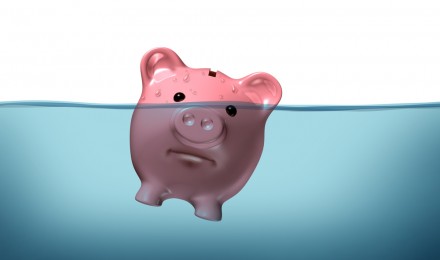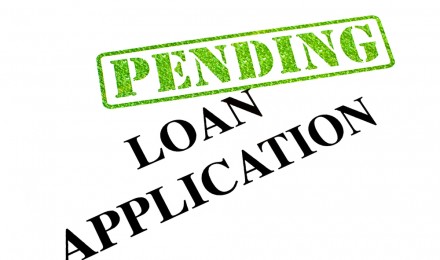Credit card fraud happens everyday, and if you think that you can’t become a victim, you’re sadly mistaken. Don’t underestimate these thieves. They are clever, and in many instances, they can acquire your credit card information while the card is still in your possession.
Although your credit card company will reverse fraudulent charges, the entire situation is a pain to deal with. There is no surefire way to guarantee the protection of your credit card, as thieves are always coming up with new ways to acquire your information. But these five tips can help you avoid credit card fraud.
1. Keep your credit card safe
Your wallet isn’t always the safest place for your credit cards. If you have multiple credit cards, keep one card in your wallet for emergencies and leave the rest of your cards at home. But don’t just lie your credit cards around the house in plain sight. Keep them tucked away in a desk drawer or other secure location. This keeps your credit cards safe in the event of a break in, and stops others (contractors, repairmen, etc.) from swiping your cards or making a mental note of your credit card numbers.
2. Watch your credit card statements
Don’t wait until the end of your billing cycle to check your credit card statement. It’s free to manage your credit card accounts online. Sign up for online account management and every few days, log into your account and monitor your most recent activity. Some thieves know how to stay under the radar. For example, they might charge small amounts on several different credit cards. If you don’t scrutinize your credit card statements you may not notice a fraudulent $1 or $5 charge. This works for thieves because if they can charge 5,000 people $1, they walk away with $5,000.
3. Ignore phishing notifications
It doesn’t matter how official or legitimate an email appears, your credit card company will never ask you to update your personal information via email, and they’ll never request this information over the phone. If you receive a so-called email from your credit card company, do not follow any links. In all likelihood, this is a phishing email and you’ll be directed to a fraudulent website which allows thieves to gain access to your personal information.
4. Be careful of public networks
Maybe you like to hang out at the local coffee shop with your laptop. This can break up the workday and offer a change of scenery. But if you’re a big online shopper, this is the worst place to make purchases. Public networks don’t offer the best security, and it doesn’t take much for a skilled hacker to grab your passwords and credit card information.
5. Look for skimmers
It only takes a few seconds to check a terminal or ATM for signs of a skimming device. Does the keypad wobble a bit? Do you see traces of glue or scuff marks on the keypad? Is the ATM in a secluded area? Listen to your instinct. Do not use any ATM or terminal that looks suspicious.
Credit card fraud happens everyday, and if you think that you can’t become a victim, you’re sadly mistaken. Don’t underestimate these thieves. They are clever, and in many instances, they can acquire your credit card information while the card is still in your possession.
Although your credit card company will reverse fraudulent charges, the entire situation is a pain to deal with. There is no surefire way to guarantee the protection of your credit card, as thieves are always coming up with new ways to acquire your information. But these five tips can help you avoid credit card fraud.
1. Keep your credit card safe
Your wallet isn’t always the safest place for your credit cards. If you have multiple credit cards, keep one card in your wallet for emergencies and leave the rest of your cards at home. But don’t just lie your credit cards around the house in plain sight. Keep them tucked away in a desk drawer or other secure location. This keeps your credit cards safe in the event of a break in, and stops others (contractors, repairmen, etc.) from swiping your cards or making a mental note of your credit card numbers.
2. Watch your credit card statements
Don’t wait until the end of your billing cycle to check your credit card statement. It’s free to manage your credit card accounts online. Sign up for online account management and every few days, log into your account and monitor your most recent activity. Some thieves know how to stay under the radar. For example, they might charge small amounts on several different credit cards. If you don’t scrutinize your credit card statements you may not notice a fraudulent $1 or $5 charge. This works for thieves because if they can charge 5,000 people $1, they walk away with $5,000.
3. Ignore phishing notifications
It doesn’t matter how official or legitimate an email appears, your credit card company will never ask you to update your personal information via email, and they’ll never request this information over the phone. If you receive a so-called email from your credit card company, do not follow any links. In all likelihood, this is a phishing email and you’ll be directed to a fraudulent website which allows thieves to gain access to your personal information.
4. Be careful of public networks
Maybe you like to hang out at the local coffee shop with your laptop. This can break up the workday and offer a change of scenery. But if you’re a big online shopper, this is the worst place to make purchases. Public networks don’t offer the best security, and it doesn’t take much for a skilled hacker to grab your passwords and credit card information.
5. Look for skimmers
It only takes a few seconds to check a terminal or ATM for signs of a skimming device. Does the keypad wobble a bit? Do you see traces of glue or scuff marks on the keypad? Is the ATM in a secluded area? Listen to your instinct. Do not use any ATM or terminal that looks suspicious.







